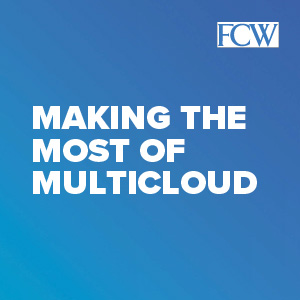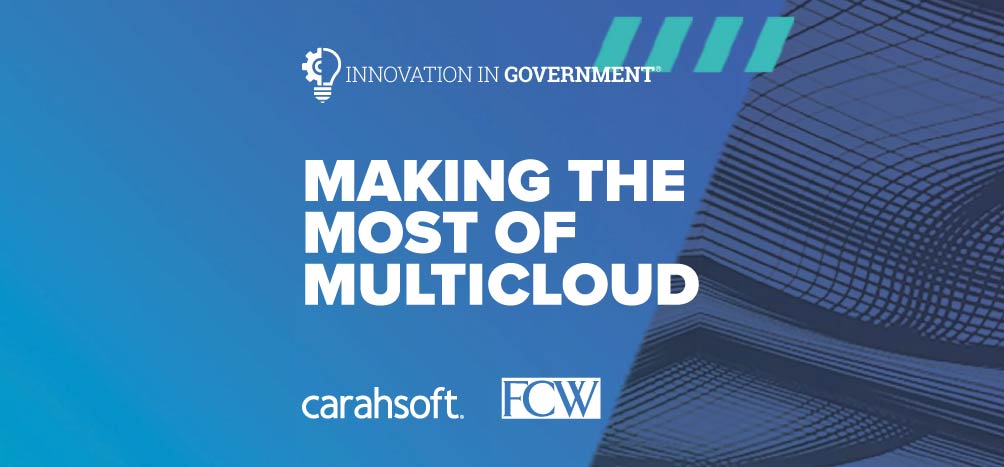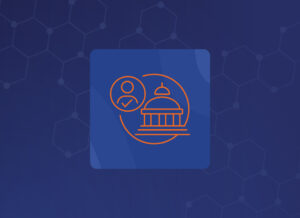Experts make a clear distinction between hybrid and multicloud environments. The General Services Administration’s MultiCloud and Hybrid Cloud Guide notes that a multicloud architecture reflects the deliberate integration of services from multiple cloud service providers. By contrast, a hybrid architecture integrates public cloud, private cloud and on-premises infrastructure.
In a recent pulse survey of FCW readers, 49% of respondents said their agencies rely on hybrid cloud environments that combine public and private clouds with on-premises systems, and 39% said their cloud environments were based on private clouds. Only 8% identified themselves as multicloud. Multicloud environments are the natural evolution of the government’s move to the cloud. As technologies become more targeted and sophisticated, it is clear that a single product cannot meet all agency needs. Multicloud represents a highly individualized, fluid approach to capitalizing on everything cloud has to offer. Regardless of where they are on their journeys, agencies continue to benefit from advances in cloud technology. That’s because the same spirit of innovation that gave rise to the cloud is giving rise to new solutions for securing and managing cloud environments. Learn how your agency can determine an optimal cloud strategy in Carahsoft’s Innovation in Government® report.
How the Mission Drives MultiCloud Success
 “For government agencies, security is a key consideration when adopting cloud technologies. The latest solutions can actually help agencies improve their security posture because of the specialized and deep focus that cloud providers bring to their mission of providing scalable and secure compute, network and storage infrastructure. At Google, we take a defense-in-depth approach to security and have over 1,000 professionals whose sole job is to ensure the security of our customers’ data and systems. They have made it their mission to prevent bad actors — whether people, companies or nation-states — from accessing customers’ data.”
“For government agencies, security is a key consideration when adopting cloud technologies. The latest solutions can actually help agencies improve their security posture because of the specialized and deep focus that cloud providers bring to their mission of providing scalable and secure compute, network and storage infrastructure. At Google, we take a defense-in-depth approach to security and have over 1,000 professionals whose sole job is to ensure the security of our customers’ data and systems. They have made it their mission to prevent bad actors — whether people, companies or nation-states — from accessing customers’ data.”
Read more insights from Scott Frohman, Head of Defense Programs at Google Cloud.
Choosing the Right Cloud Tool for the Job
“Adding multicloud environments into an agency’s IT portfolio does come with challenges. In particular, it can create complexity for security teams that must protect the agency’s identities, devices, data, applications and infrastructure. Traditional cybersecurity tools weren’t designed for multicloud environments, and it can be difficult to transition from existing tools to platform-specific and cloud-native ones, but doing so is essential for taking full advantage of cloud’s market-leading security capabilities.”
Read more insights from Jason Payne, CTO at Microsoft Federal.
Seamlessly Embracing a MultiCloud Environment
“Choosing the right cloud solutions can be a daunting task, but knowing what steps to take can significantly streamline the process. Agencies should begin by clearly identifying their business and functional requirements and considering their security needs. Doing so will make it possible to evaluate which cloud service provider (CSP) is positioned to offer the best capabilities for the best cost. Throughout the process, agencies should keep in mind that enterprise data is their single most important asset.”
Read more insights from James Donlon, Director of Solution Engineering for Government and Education at Oracle.
The Move to MultiCloud by Default
“Automation is essential for multicloud management. Agencies can begin by automating activities and sharpening their skills in their own data centers. Once government IT professionals work with a platform to automate activities in the data center, they can then automate deployments to various clouds and make the process as efficient as possible. When automation is done correctly, agencies also give themselves the ability to move workloads smoothly between environments, whether they want to bring a workload back into the data center or move it to another cloud. The fact that the workload was built on an automation platform means agencies are already a step ahead when it comes to getting that deployment done and reaping the benefits of a multicloud environment.”
Read more insights from Adam Clater, Chief Architect of the North America Public Sector at Red Hat.
A Smarter Approach to Cloud Adoption
“The cloud-smart strategy is to migrate then modernize most workloads because the speed of cloud adoption and the consolidation of operating constructs is crucial. Such an approach also reduces costs, migration manpower and training burdens. In fact, most workloads can move to the optimized cloud of choice as-is if the right abstraction and workload management capabilities are employed. Once applications are in the cloud, they are easier to modernize.”
Read more insights from Jeremiah Sanders, Senior Transformation Strategist at VMware.
Download the full Innovation in Government® report for more insights from these cloud thought leaders and additional industry research from FCW.








